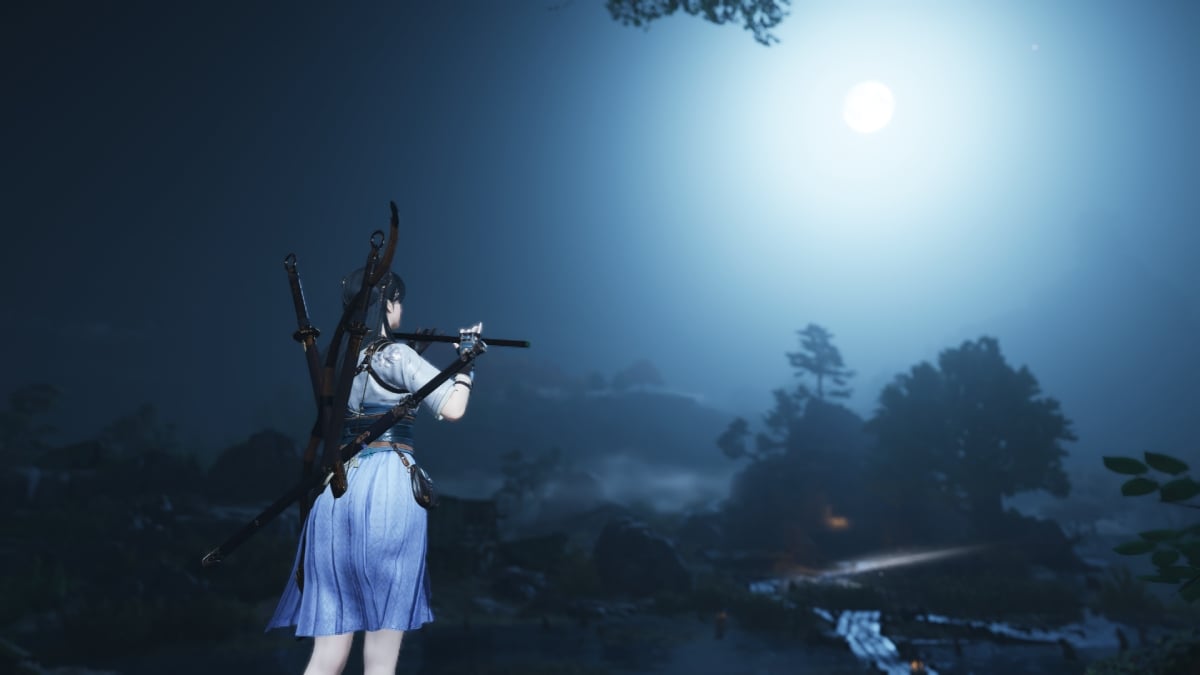
I usually have a good idea what to expect when I start a new game. If it’s a role-playing game, I naturally compare it to others like it, looking for what makes it stand out. But recently, more developers are trying to combine different game types, and it doesn’t often work well. Where Winds Meet is a notable exception. After playing this expansive Wuxia game, I can confidently say it’s truly unique. Despite having many complex systems and tons of content, it’s surprisingly easy to pick up and play, which I really enjoyed.
Everything, All at Once
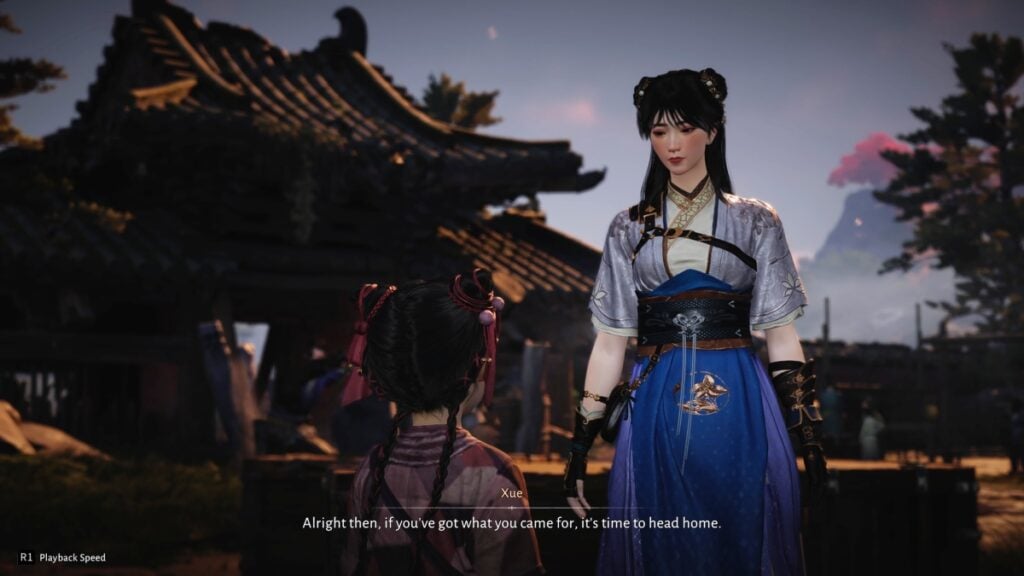
Just to clarify, we tested this game using both a brand new account and one that was already fully leveled. We’ll update our review score as we continue playing.
Everyone online is wondering what Where Winds Meet actually is. Is it a massive multiplayer game, a story-driven RPG, a free-form sandbox, or something like a game with collectible characters? The surprising answer is: it’s all of those things.
It’s easy to understand why players are confused about this game. The marketing hasn’t been very clear. I didn’t realize it was a huge hit in China before watching the trailer, and now that I’ve played it, it makes sense why it is so popular there.
Okay, so Where Winds Meet throws you right into the action! I’m talking dodging arrows while carrying a baby, jumping off a horse mid-chase, and taking on this massive enemy using some seriously cool tai-chi moves. I was leaping over heads and pulling off amazing fights, all while making sure the baby stayed calm – no crying allowed! But trust me, that intense opening is just a taste of the wild ride this game has in store. It’s non-stop action and I can’t wait to play more.
Okay, so the game starts with a tutorial that seriously reminded me of Sekiro, and it grabbed my attention right away. Then you get to build your character – they call him the Young Master – and honestly, the character creator is insanely detailed. I spent ages perfecting my guy! Once you’re done, things kick off with a really cool fight… someone swipes your Jade Pendant, and suddenly you’re on a quest to get it back. It’s a classic setup, but it works!
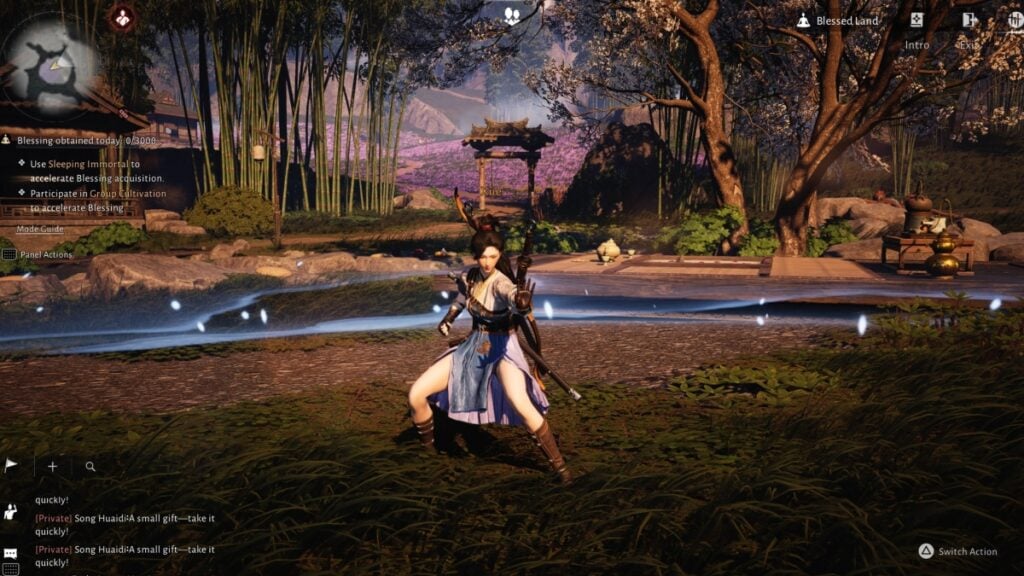
There’s much more to explain, but I won’t go into detail for a couple of reasons. First, the version I played still had some translation errors and missing dialogue, so it wasn’t a complete experience. Second, what I did play was surprisingly good, and I’d prefer players discover the story and gameplay for themselves rather than have me reveal too much.
Despite its flaws, the story is surprisingly well-written and moves at a good pace. What really stands out is how it blends exciting action with a deep, engaging narrative. The gameplay is similar to open-world RPGs, with a few elements inspired by gacha games. You’ll travel between areas, completing various quests that involve exploring, learning new skills, and battling enemies. As you progress, you’ll improve your character, fighting abilities, and equipment. When you reach a level cap, you can overcome a challenge to break it, allowing for further growth, but also increasing the difficulty of the game. If you’re familiar with open-world gacha titles like Wuthering Waves or Genshin Impact, you’ll likely notice some familiar mechanics.
Luckily, that’s where the similarities to typical gacha games stop. Though it includes a few elements from that genre, they aren’t central to the experience. Where Winds Meet feels more like an open sandbox, offering so much freedom that you’ll find yourself deciding whether to pursue a new side quest, master a fun skill like leaping as a frog, continue the main story, or seek out a way to join a faction.

A big part of Where Winds Meet is discovering things for yourself. While the main story does guide you with markers showing where to go, the game really rewards players who like to explore. For instance, I was traveling to a village when I stumbled upon a hilarious scene: a goose was aggressively honking at a terrified bear! The bear was shaking with fear. Interacting with them triggered a chance to learn a new skill. I played a quick mini-game and ended up with the ability to summon a goose from my pocket, have it distract enemies with its squawks, and even throw the poor bird at them! That’s just one of the many unexpected discoveries you can make while wandering around.
During another playthrough, while following the main quest, I stumbled upon a boy who’d lost his dog’s toy. While searching for it, I broke a floor panel, revealing a hidden path to a large underground dungeon. I did find the toy, but I decided to explore the dungeon, fighting enemies, opening chests, and eventually defeating a tough boss. The game didn’t guide me to any of this; it all happened because I chose to explore. Where Winds Meet is a rare game that truly rewards players for venturing off the main path.
There were so many surprising moments, like encountering a group running in towels and having to sneak their cheers, learning to jump like a frog simply by talking to someone, or even getting defeated in a martial arts tournament by a child! It all sounds unbelievable, but it actually happened. However, those are just a few examples – Where Winds Meet offers far more than that.
A True Wuxia Adventure
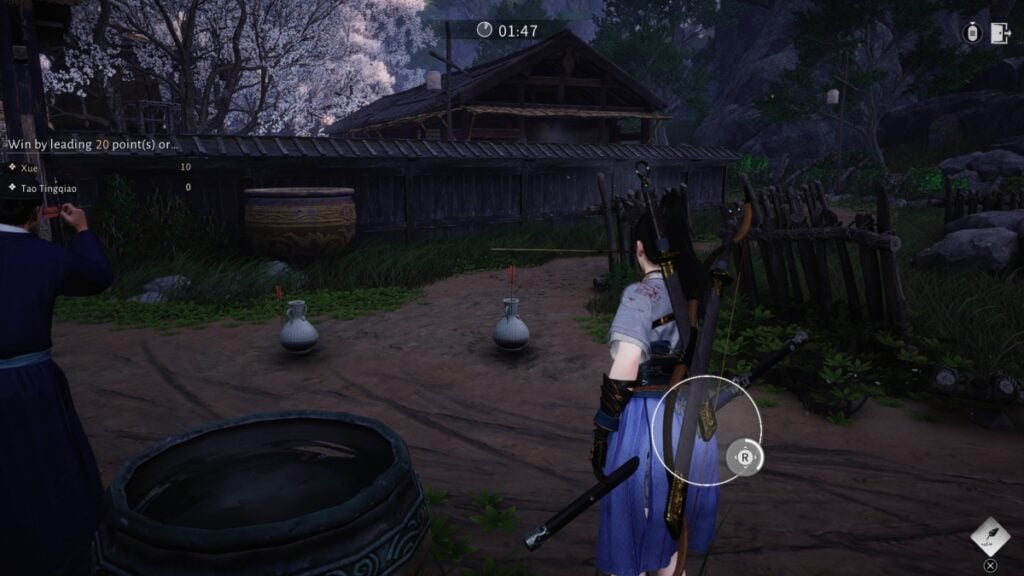
Okay, enough about just wandering around! Let’s talk about the really cool stuff in Where Winds Meet: the fighting! Seriously, this game nails the Wuxia style – you can tell right from the start, and it’s woven into everything you do as you explore the world.
The combat in Black Myth: Wukong feels most similar to recent action games. You’ll have a variety of weapons to choose from, like swords, dual blades, a rope dart (which is really fun to use!), an umbrella for attacking from a distance, and a fan for healing. Each weapon has its own unique fighting style and set of moves. These moves are your active skills, and they change depending on what weapon you’re using. For instance, with a sword, you can leap backwards, and pressing the button again lets you quickly close in on an enemy with a powerful swing.
You’ll gain some skills by investing points in your Talent Tree. But even if you find a powerful weapon, you won’t be able to use its special abilities until you learn them. You can learn these abilities by finding a teacher or, for a more exciting option, by stealing them. Stealing requires completing a short mini-game, but it’s a fun way to gain new skills. Not all fighting styles are available from the beginning, but the game will guide you to the NPCs who can teach them, letting you choose when and how to learn.
Mystic Arts add another dimension to combat, and can even be used outside of battles. Unlike Martial Arts, they don’t depend on your weapon and you can learn up to four different ones. You acquire Mystic Arts in a similar way to other skills, but they have unique effects both during and outside of fights.
The game features special abilities, called Mystic Arts, that let you do things like steal items from anyone. In combat, you can even briefly steal an enemy’s weapon to deliver a powerful attack. You can combine these abilities, and the game offers hints about which combinations work best in different situations. This creates a lot of depth in how you develop your character, which leads to even more options.
Some players categorize Where Winds Meet as an MMO, but it’s more of a simplified version. It doesn’t offer the same depth as games like World of Warcraft or Final Fantasy XIV. One MMO-style feature is the classic ‘holy trinity’ of roles: Damage Dealers (DPS), Tanks, and Healers. The weapons you choose will determine which role you fulfill in battles, whether you’re in a dungeon or exploring the open world.

I was really surprised by how some of the enemy fights felt – almost like an MMO! There was this one NPC with a… unique mount, and I noticed attacks with clear warnings, which totally reminded me of Final Fantasy XIV. But Where Winds Meet isn’t just about standing and taking it. It’s action-focused, so you can actually dodge, parry, and actively avoid damage, which is awesome!
In battles, you’ll start with quick attacks and unlock stronger ones as you play. While you could win by just repeatedly using these attacks, you’d miss out on the most exciting parts of the combat system. Where Winds Meet truly stands out when you use moves like Tai-chi to knock larger enemies off balance, then follow up with skills to stun them. The result is a visually impressive and satisfying fight that few games can rival.

Honestly, playing this game reminded me of Sekiro quite a bit. Right from the start, you can choose how hard you want it to be – there’s even a permadeath option! They also have a mode that shows you exactly when to dodge or parry, which was cool, kind of like in Final Fantasy 16. I jumped straight into hard mode because I love a good challenge, and I think that’s how you really get the most out of it. You have to pay attention to how enemies move, learn their attacks, and master parrying so you can pull off those awesome, smooth finishing moves. It’s so satisfying when you finally nail it!
Each character, including the one you play, has a Qi meter. If you empty it, you become vulnerable to a powerful attack. For you, this means enemies will do extra damage. It was impressive how well all the different parts of the game worked together, and how simple it was to grasp.
An Unmatched Sandbox

I also want to highlight the game’s sandbox elements. With so much focus on currencies, equipment, quests, and gameplay systems, it’s easy to overlook them, but they’re actually one of the most appealing features of Where Winds Meet.
The best open-world games encourage players to explore, experiment, and discover the limits of what’s possible. Where Winds Meet delivers on this promise, and goes above and beyond.
Most characters you encounter in the game are interactive – you can talk to them and get responses through an AI chat system. While I generally don’t love AI in games, it works okay for simple conversations like these where it doesn’t impact the core gameplay. I didn’t get a chance to fully test it out, as it felt a little glitchy with some characters, but I suspect that was just due to the version of the game I was playing.
The game has a crime system where actions have consequences. I once stole an item and was spotted by a witness who ran to report me. Trying to eliminate the witness, I ended up being killed by – and I’m not kidding – a legendary goose. This resulted in me becoming a wanted criminal and suffering a rather embarrassing defeat.
This is just a small taste of what the game has to offer, and it feels like I’ve only seen a fraction of it. I’m really happy with how the game prioritizes fun and lets players enjoy everything without having to unlock content or spend extra money. It’s easy to pick up and play, but more importantly, it’s incredibly captivating.
While generally good, this version isn’t perfect. I did notice a few problems that need fixing. The characters’ lip movements didn’t always match their words, and on the PlayStation 5, textures sometimes loaded in slowly and the game’s frame rate occasionally dropped. These issues weren’t severe enough to ruin the experience, but they were distracting and pulled me out of the game.
When Ambition Pays Off
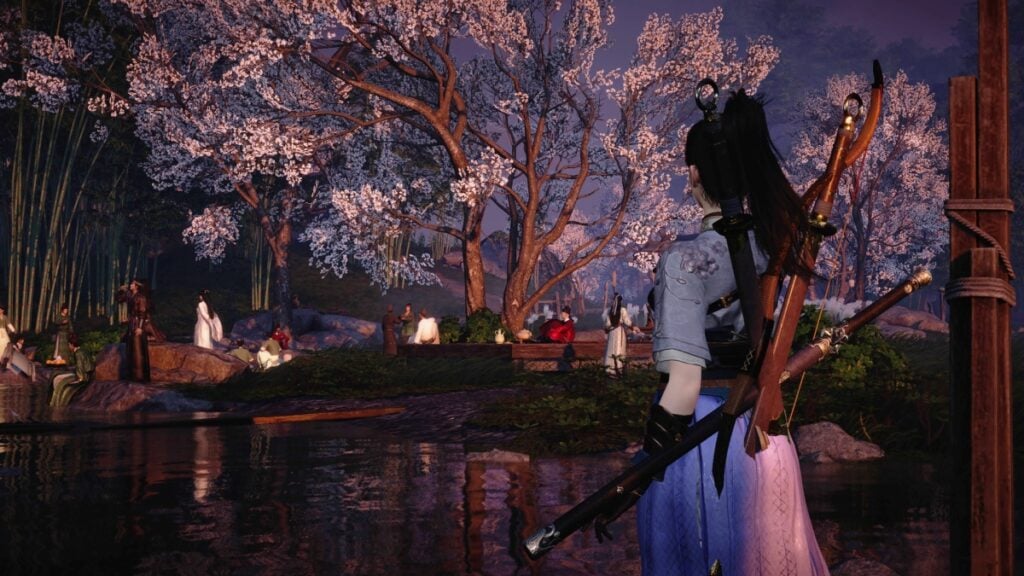
It’s really impressive how well Where Winds Meet manages to combine so many different elements into a cohesive experience. With so much going on – a single-player story, social interaction, player-versus-player combat, and cooperative challenges – you’d think something would feel out of place, but it all works surprisingly well. The game successfully appeals to a wide range of players, no matter what they’re looking for.
I haven’t experienced everything yet – some things only become available when the game officially launches – but so far, I’ve been really impressed. It’s a game I’m eager to explore fully, because the level of customization and freedom is unlike anything I’ve seen in a game of this size, and I think it will appeal to a wide range of players.
Review copy provided by the publisher.
Read More
- ETH PREDICTION. ETH cryptocurrency
- Cantarella: Dominion of Qualia launches for PC via Steam in 2026
- They Nest (2000) Movie Review
- Code Vein II PC system requirements revealed
- Gold Rate Forecast
- Jynxzi’s R9 Haircut: The Bet That Broke the Internet
- Super Animal Royale: All Mole Transportation Network Locations Guide
- AI VTuber Neuro-Sama Just Obliterated Her Own Massive Twitch World Record
- Ripple’s New Partner: A Game Changer or Just Another Crypto Fad?
- Anthropic’s AI vending machine turns communist and gives everything for free
2025-11-12 19:11